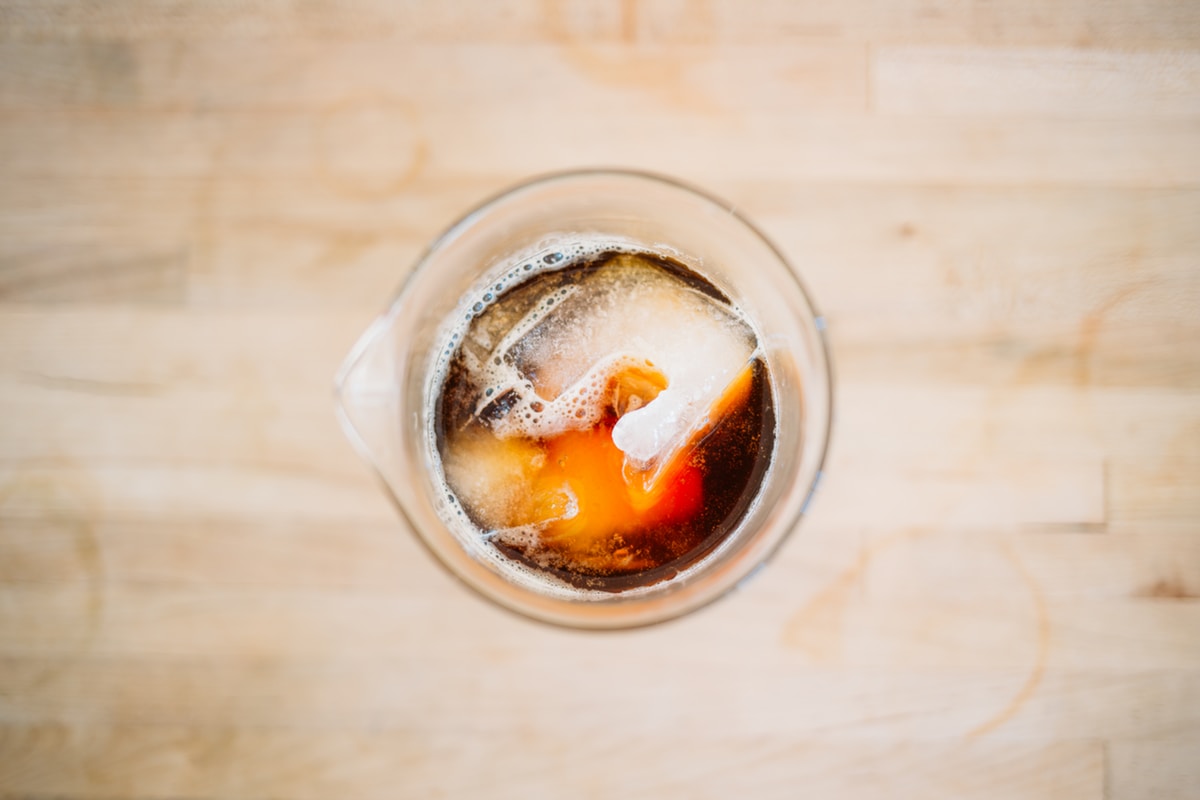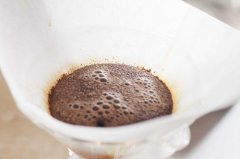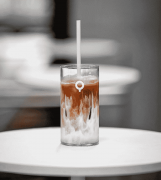The difference between Starbucks latte and mocha introduction to Starbucks latte

Professional coffee knowledge exchange more coffee bean information please follow the coffee workshop (Wechat official account cafe_style)
From Starbucks to Lucky now, coffee shops can be seen everywhere, the shelves are full of instant brands, and life photos of coffee are hidden in moments. The coffee economy has long occupied China.
Since childhood, coffee has appeared in our lives, but after drinking coffee for so many years, we are still confused.
What's the difference between latte and mocha?
What's the name of the coffee that can pull flowers? Cafe Latte
What exactly do mocha and cappuccino mean?
Furebai, how should I pronounce it? What on earth is it?
Every time I go to a cafe, I order to buy a seat. Every time I go to Starbucks, I order just to win the cup.
So this time, let's get to know coffee, be a person who knows coffee, and enjoy it.
The story starts with coffee beans.
Coffee, from a plant in nature to the beverage in our hands, mainly goes through five steps: planting, harvesting, processing, baking and extraction. Some differences in the process will lead to different categories of coffee.
Planting
The planting place and variety of coffee trees will affect the quality of coffee.
1. Planting place (place of origin)
① by country:
Kenyan coffee, Ethiopian coffee, Vietnamese coffee and so on.
High-quality coffee usually comes from Panama, Kenya, Ethiopia and other African and Central and South American countries.
② by production area:
The same country will also be divided into different coffee producing areas, such as Sidamo and Yega Snow in Ethiopia, Blue Mountains in Jamaica, Sumatra in Indonesia, and so on.
For experienced coffee lovers and professionals, they will also be divided according to different estates.
two。 Coffee tree variety
According to the large varieties, coffee can be simply divided into Arabica species and Robusta species.
Generally speaking, Arabica tastes better than Robusta, but it cannot be simply generalized. Arabica ≠ good coffee, its quality is also different.
There are subdivisions under large varieties. There are countless subspecies in Arabica, and subspecies mate to produce new varieties, such as yellow bourbon, iron pickup, Rosa, and so on.
Harvest
This stage is mainly for picking and screening, and will not cause a "classification" difference in the quality of coffee beans.
Deal with
This step is to remove the outer skin and pulp of the cherry-shaped coffee fruit (Coffee Cherry) and turn it into coffee beans.
There are three common ways to treat the coffee, and the coffee will have different flavors.
1. Insolation
Insolation is a more natural treatment, most of which use extensive exposure, while boutique coffee will be finely processed.
Take the sun treatment of coffee beans, the fruit flavor will be more prominent.
two。 Water washing
The process of washing is complicated. The coffee fruit is classified according to the same maturity. After the seeds are extruded, the seeds are separated, fermented and cleaned in a water tank, the mucus is washed, and then dried.
The coffee beans processed by washing method taste clean and can taste bright sour fruit.
3. Honey treatment (semi-washed)
Honey treatment combines the two processes of tanning and washing, so the taste of the coffee beans also have the characteristics of the coffee beans treated by these two methods.
Baking
1. Baking degree
According to the degree of baking, there are differences between light, medium and depth. The deeper the baking, the darker the color of the beans.
Light coffee beans, showing cinnamon color, the smell of green has been removed, the aroma is OK, but the acidity is strong. American coffee often uses lightly roasted beans.
Moderate coffee beans, showing a little strong brown, enhanced bitterness. The coffee acid produced is bitter with good aroma and flavor. Japanese and Central Europeans prefer moderately roasted coffee beans.
Deep coffee beans, showing a strong brown color, bitter taste will be stronger than sour taste, belongs to the Central and South American baking method, suitable for the preparation of a variety of iced coffee.
two。 Bake object
According to the roasting object, it is divided into single coffee (or single bean) and blended coffee (or, more often, mixed beans).
Individual coffee is suitable to maximize the characteristics of high-quality coffee beans. The strictest single-item coffee will be specific to the variety, origin, manor, treatment, year and batch.
Blended coffee is often used in coffee shops with large output, such as Starbucks, Costa, etc.
In order to ensure the stability of the taste and quantity of its coffee, a variety of beans are blended during the baking stage (either raw beans or roasted ripe beans).
Coffee beans used in blending are usually not as good as individual beans and are deeply roasted. However, experienced baristas can also make very delicious coffee.
Extraction
Extraction is the process of turning coffee beans into coffee.
The method of extraction can be divided into hand drip filtration, siphon, immersion and so on.
Re-production
The extraction and then production is what we usually see in cafes.
Coffee espresso
Espresso coffee, also known as espresso. Espresso is Italian for "freshly brewed for you," usually made in Italian coffee machines or mocha pots, and the process involves "air pressure," which is extracted rapidly for a short time.
Espresso is a classic in every cafe and the basis for other fancy coffees.
Espresso is generally small in volume, around 30 ml. It tastes bitter, with a layer of coffee oil floating on the surface, and the taste is mellow and strong.
Americano
American coffee is thinner and milder than Italian coffee. In the major coffee chains, American coffee =1× espresso +2 × hot water. American coffee = diluted espresso, very simple and rough.
The difference between Italian and American coffee is the way coffee is made. In the United States, a drip pot is usually used to extract soluble substances from coffee powder by hot water, without involving "air pressure."
If you want to distinguish Italian and American visually, then the coffee surface has a clear sense of foam coffee fat, is Italian coffee, if not, is American.
Latte Latte
Latte =1× espresso +1.5 × milk + foam. Beautiful pull flower is presented above the foam.
Lattes are very popular in China and cost effective. A good latte, coffee and milk.
Cappuccino Cappuccino
Cappuccino gets its name from the turban that covers the dark brown tunic of a cappuccino church friar.
Cappuccino is indeed easily confused with latte, and the difference lies in the ratio of milk to foam: Cappuccino has more foam than milk.
Cappuccino at the same price is usually smaller than latte, but the coffee flavor will be stronger and the milk foam will be very dense, especially popular with many girls.
The ratio of cappuccino milk to coffee can be adjusted according to taste preferences, wet cappuccino milk is strong, dry cappuccino coffee is strong.
Mocha Mocha
Mocha is a coffee with a complicated recipe. Mocha = espresso + chocolate sauce + milk + whipped cream. The advanced version will also be squeezed with chocolate sauce, or sprinkled with cocoa powder, cinnamon powder, etc. Popularization, cinnamon powder is a powder made from cinnamon or dried bark and branch bark of large-leaf cinnamon.
Mocha is "rich in content", so the price is usually higher and the volume is larger.
Macchiato
Macchiato = espresso + foam. Simply put, scoop a few spoonfuls of foam into your espresso and enjoy the fine, dense foam amid the strong coffee flavor.
The familiar "caramel macchiato" is an original creation of Starbucks. Vanilla syrup is added to milk and mixed with espresso. Then a layer of caramel is coated on the foam to present a rich taste.
Con Panna
Campo blue = espresso + whipped cream. It is a relatively simple coffee.
Caff Breve is espresso coffee topped with hot whipped cream, which has milk bubbles on the surface.
White Coffee Flat White
White coffee =1× espresso +1.5 × hot milk.
Malaysian white coffee is roasted at low temperatures.
The name "fú ruí bái" is Starbucks '"stage name" for it, and its essence is Flat White. "Frieby" is a very good stage name. Just looking at the name makes people want to try it, but they suffer from the contradiction of not knowing how to pronounce it.
Fry whites are similar to lattes in a way that differs from lattes mainly in the amount of coffee and foam. Latte foam will be softer and thicker than Frie, while Frie white foam will be thin and very smooth. In general, Frie White is smaller than latte and is made with the same amount of espresso as latte, so Frie White coffee tastes stronger.
END
Important Notice :
前街咖啡 FrontStreet Coffee has moved to new addredd:
FrontStreet Coffee Address: 315,Donghua East Road,GuangZhou
Tel:020 38364473
- Prev

The latest brand list of pure black coffee in 2019. Which brand of black coffee tastes good?
Professional coffee knowledge exchange more coffee bean information Please pay attention to the coffee workshop (Wechat official account cafe_style) for busy white-collar workers, the cost of grinding coffee time is too high. Fortunately, there is something called instant coffee in this world, and black coffee is the favorite of those who pursue a healthy life. Black coffee is the original taste of coffee without adding anything. This kind of coffee
- Next

Starbucks must order: what is mocha coffee? Is the latte good or hot?
Professional coffee knowledge exchange more coffee bean information please follow the coffee workshop (Wechat official account cafe_style) Starbucks three swordsmen, mocha coffee is the lowest-key. Look at his other two brothers, the latte and the cappuccino, always standing in the spotlight. However, when you meet mocha coffee, it will tell you that I am a very warm cup of coffee. Winter day
Related
- Beginners will see the "Coffee pull flower" guide!
- What is the difference between ice blog purified milk and ordinary milk coffee?
- Why is the Philippines the largest producer of crops in Liberia?
- For coffee extraction, should the fine powder be retained?
- How does extracted espresso fill pressed powder? How much strength does it take to press the powder?
- How to make jasmine cold extract coffee? Is the jasmine + latte good?
- Will this little toy really make the coffee taste better? How does Lily Drip affect coffee extraction?
- Will the action of slapping the filter cup also affect coffee extraction?
- What's the difference between powder-to-water ratio and powder-to-liquid ratio?
- What is the Ethiopian local species? What does it have to do with Heirloom native species?

